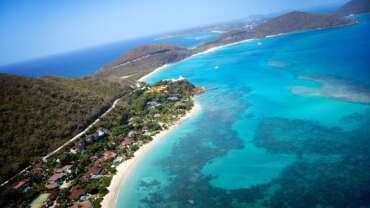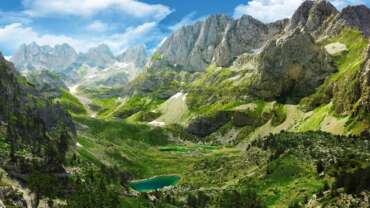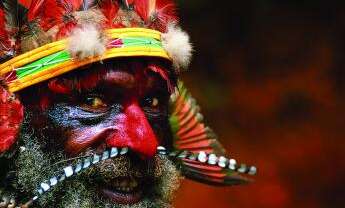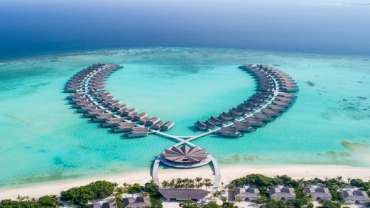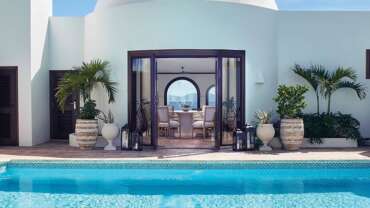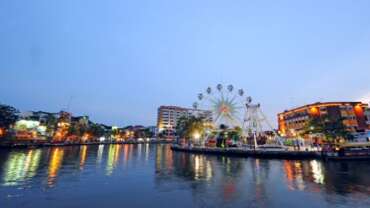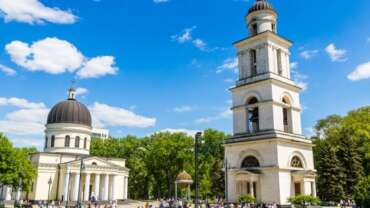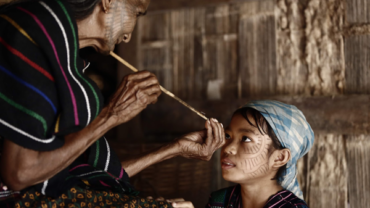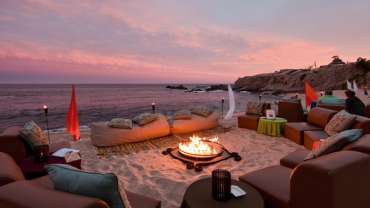Norway - Powered by Nature
Norway is a Scandinavian country encompassing mountains, glaciers and deep coastal fjords. Oslo, the capital, is a city of green spaces and museums. Preserved 9th-century Viking ships are displayed at Oslo’s Viking Ship Museum. Bergen, with colorful wooden houses, is the starting point for cruises to the dramatic Sognefjord. Norway is also known for fishing, hiking and skiing, notably at Lillehammer’s Olympic resort.
Oslo – A metropolitan capital
The country’s largest city is a cosmopolitan hub with an abundance of world-class architecture, museums, restaurants and shopping.
As one of Europe’s fastest-growing cities this decade, Oslo is buzzing with energy from new neighbourhoods and cutting-edge food, to fashion and art scenes. Captivating landmarks like the Opera House, the Astrup Fearnley Museum and Barcode are changing the face of the city, and Oslo maintains its refreshing closeness to nature that few other capitals can match.
History of Norway
The earliest traces of human occupation in Norway are found along the coast, where the huge ice shelf of the last ice age first melted between 11,000 and 8000 BCE. The oldest finds are stone tools dating from 9500 to 6000 BCE, discovered in Finnmark in the north and Rogaland in the southwest. Theories of a “Komsa” type of stone-tool culture north of the Arctic Circle and a “Fosna” type from Trøndelag to Oslo Fjord were rendered obsolete in the 1970s. More recent finds along the entire coast revealed to archaeologists that the difference between the two can simply be ascribed to different types of tools and not to different cultures. Coastal fauna provided a means of livelihood for fishermen and hunters, who may have made their way along the southern coast about 10,000 BCE when the interior was still covered with ice. It is now thought that these so-called “Arctic” peoples came from the south and followed the coast northward considerably later. Some may have come along the ice-free coast of the Kola Peninsula, but the evidence of this is still poor.
In the southern part of the country are dwelling sites dating from about 5000 BCE. Finds from these sites give a clearer idea of the life of the hunting and fishing peoples. The implements vary in shape and mostly are made of different kinds of stone; those of later periods are more skillfully made. Rock carvings have been found, usually near hunting and fishing grounds. They represent game such as deer, reindeer, elk, bears, birds, seals, whales, and fish (especially salmon and halibut), all of which were vital to the way of life of the coastal peoples. The carvings at Alta in Finnmark, the largest in Scandinavia, were made at sea level continuously from 6200 to 2500 BCE and mark the progression of the land as it rose from the sea after the last ice age.
Earliest peoples
Between 3000 and 2500 BCE new immigrants settled in eastern Norway. They were farmers who grew grain and kept cows and sheep. The hunting-fishing population of the west coast was also gradually replaced by farmers, though hunting and fishing remained useful secondary means of livelihood.
From about 1500 BCE bronze was gradually introduced, but the use of stone implements continued; Norway had few riches to barter for bronze goods, and the few finds consist mostly of elaborate weapons and brooches that only chieftains could afford. Huge burial cairns built close to the sea as far north as Harstad and also inland in the south are characteristic of this period. The motifs of the rock carvings differ from those typical of the Stone Age. Representations of the Sun, animals, trees, weapons, ships, and people are all strongly stylized, probably as fertility symbols connected with the religious ideas of the period.
Little has been found dating from the early Iron Age (the last 500 years BCE). The dead were cremated, and their graves contain few burial goods. During the first four centuries CE the people of Norway were in contact with Roman-occupied Gaul. About 70 Roman bronze cauldrons, often used as burial urns, have been found. Contact with the civilized countries farther south brought a knowledge of runes; the oldest known Norwegian runic inscription dates from the 3rd century. At this time the amount of settled area in the country increased, a development that can be traced by coordinated studies of topography, archaeology, and place-names. The oldest root names, such as nes, vik, and bø (“cape,” “bay,” and “farm”), are of great antiquity, dating perhaps from the Bronze Age, whereas the earliest of the groups of compound names with the suffixes vin (“meadow”) or heim (“settlement”), as in Bjorgvin (Bergen) or Saeheim (Seim), usually date from the first centuries CE.
People of Norway
Ethnic groups
In most parts of Norway the nucleus of the population is Nordic in heritage and appearance. Between 60 and 70 percent have blue eyes. An influx of people from southern Europe has been strong in southwestern Norway. Nord-Norge has about nine-tenths of the estimated 30,000 to 40,000 Sami—the country’s first inhabitants—living in Norway. Only a small number of them still practice traditional reindeer herding on the Finnmark Plateau. The Sami arrived in Norway at least 10,000 years ago, perhaps from Central Asia. Formerly subject to widespread, even official ethnic discrimination, the Sami are now legally recognized as a distinct culture and have been granted some measure of autonomy through the Sami Parliament.
In the first decades of the 21st century, an increasing number of immigrants from Africa and the Middle East began to transform Norway’s largely homogeneous population into a more ethnically diverse one.
Languages
The Norwegian language belongs to the North Germanic branch of the Germanic language group. The Norwegian alphabet has three more letters than the Latin alphabet—æ, ø, and å, pronounced respectively as the vowels in bad, burn, and ball. Modern Norwegian has many dialects, but all of them, as well as the Swedish and Danish languages, are understood throughout all three of these Scandinavian countries. Until about 1850 there was only one written language, called Riksmål, or “Official Language,” which was strongly influenced by Danish during the 434-year union of the two countries. Landsmål, or “Country Language,” was then created out of the rural dialects. After a long feud, mostly urban-rural in makeup, the forms received equal status under the terms Bokmål (“Book Language”) and Nynorsk (New Norwegian), respectively. For more than four-fifths of schoolchildren, Bokmål is the main language in local schools, and it is the principal language of commerce and communications. In daily speech Bokmål is predominant in the area around Oslo and the eastern Norwegian lowland, while Nynorsk is widely spoken in the mountainous interior and along the west coast.
More than 15,000 Norwegians, mostly in scattered pockets of northern Norway, speak North Sami as a first language. A Uralic language, Sami is the official language of a number of municipalities.
Almost all educated Norwegians speak English as a second language. Indeed, so widespread is its use that some commentators have voiced concern that English may displace Norwegian in commerce and industry.
Religion
More than four-fifths of all Norwegians belong to the Evangelical Lutheran national church, the Church of Norway, which is endowed by the government. The largest groups outside this establishment are Pentecostals, Roman Catholics, Lutheran Free Church members, Jehovah’s Witnesses, Methodists, and Baptists. As a result of Asian immigration, there also are small groups of Muslims and Buddhists.
Cultural Life of Norway
Located on the outskirts of Europe and with much of its inland population almost completely isolated until the 20th century, Norway has been able to preserve much of its old folk culture, including a large body of legends concerning haugfolket (pixies), underjordiske (subterraneans), and vetter (supernatural beings). On the other hand, as seafarers and traders, the Norwegians have always received fresh cultural stimuli from abroad. A number of Norwegians have made important contributions in return, notably the playwright Henrik Ibsen (1828–1906) and the composer Edvard Grieg (1843–1907). The Norwegian recipients of the Nobel Prize for Literature are Bjørnstjerne Bjørnson (1903), Knut Hamsun (1920), and Sigrid Undset (1928).
Daily life and social customs
Although Norway is in most ways very modern, it has maintained many of its traditions. Storytelling and folklore, in which trolls play a prominent role, are still common. On festive occasions folk costumes are worn and folk singing is performed—especially on Grunnlovsdagen (Constitution Day), commonly called Syttende Mai (May 17), the date of its celebration. Other popular festivals include Sankhansaften (Midsummer’s Eve), Olsok (St. Olaf’s Day), and Jul (Christmas), the last of which is marked by family feasts whose fare varies from region to region but that are traditionally marked by the presence of seven kinds of cake.
The national costume, the bunad, is characterized by double-shuttle woven wool skirts or dresses for women, accompanied by jackets with scarves. Colourful accessories (e.g., purses and shoes) complete the outfit. The bunad for men generally consists of a three-piece suit that also is very colourful and heavily embroidered. Traditionally, Norwegians had two bunader, one for special occasions and one for everyday wear.
The country’s natural landscape—its Arctic environment and vast coasts—has shaped Norway’s customs and history, as outdoor activities are central to the life of most Norwegians. In particular, the country’s cuisine reflects its environment. Fish dishes such as laks (salmon) and torsk (cod) are popular. Lutefisk, cod soaked in lye, is common during the Christmas holidays. Rømmegrøt (sour-cream porridge), pinnekjøtt (dried mutton ribs), reker (boiled shrimp), meatcakes, lefse (griddlecakes), geitost (a sweet semihard cheese made from cow’s or goat’s milk), and reindeer, moose, elk, and other wildlife also are popular traditional delicacies. The strong liquor called aquavit (also spelled akevitt), made of fermented grain or potatoes, is also widely used.
In northern Norway the Sami maintain a distinct culture. Long known as reindeer herders, they maintain their own national dress. While many Sami have modernized and few continue to practice traditional nomadic life, a variation of that lifestyle continues. Where once the whole family followed the herd, now only the men do, with women and children remaining behind in towns and villages. Sami Easter festivals include reindeer races and chanting (joik).
The arts
In Viking days storytellers (skalds) of skaldic poetry wove tales of giants, trolls, and warlike gods. Drawing on this tradition, centuries of Norwegian authors have created a rich literary history, in both spoken and written form. Yet it was not until the 19th century, following Norway’s separation from Denmark, that Norwegian literature firmly established its identity. Especially important were the poetry of Henrik Wergeland and the plays of Ibsen, whose realistic dramas introduced a new, politically charged moral analysis to European theatre. The works of novelists Hamsun and Undset remain influential, though modern Norwegians are more likely to read contemporaries such as Bjørg Vik, Kim Småge, and Tor Åge Bringsværd, who write fantasy, existential detective novels, and philosophical treatises, respectively.
Although Norway comprises one of the world’s smaller language communities, the country is among the leaders in books published per capita. Several thousand new titles appear annually, of which some three-fifths are of Norwegian origin. Literature is subsidized through a variety of means, including tax exemption, grants to writers, and government purchasing for libraries. In all, there are about 5,000 public or school libraries.
Norwegian painters of the 20th century excelled in murals to such an extent that they are rivaled only by the Mexican tradition in this sense. Other artists are world-renowned for their multimedia assemblages, pictorial weaving, and nonfigurative art in sculpture as well as painting. The works of Gustav Vigeland have been assembled in Oslo’s Vigeland sculpture park (Frogner Park) in a spectacular display centred around a granite monolith nearly 60 feet (18 metres) high containing 121 struggling figures.
Medieval stave churches of upright logs and houses of horizontal logs notched at the corners have inspired much Norwegian architecture. Private houses, almost all of wood, are made to fit snugly into the terrain. For larger buildings, steel and glass are supplemented by concrete that often is shaped and textured with considerable imagination.
Arts and crafts and industrial design flourish side by side, often inspired by archaeological finds from the Viking Age, the culture of the northern Sami, and advanced schools of design. Norway has markedly increased its exports of furniture, enamelware, textiles, tableware, and jewelry, much of which incorporates design motifs reflecting these cultural heritages as well as avant-garde styles. A distinctive Scandinavian decorative art form called rosemaling, widely practiced in Norway, involves painting objects such as furniture with floral designs; special schools called folkehøgskoler offer classes in this and other crafts.
Norwegian composers Grieg and, to a lesser extent, Johan Svendsen and Geirr Tveitt have earned acclaim. Contemporary composers such as Åse Hedstrøm, Nils Henrik Asheim, and Cecilie Ore frequently employ themes drawn from ancient folklore, developing work performed by such ensembles as the Oslo Philharmonic Orchestra, the Norwegian Chamber Orchestra, and the Bergen Philharmonic Orchestra. Musical festivals in Oslo, Trondheim, Bergen, and other cities honour genres ranging from jazz to heavy metal, hip-hop, and even Norway’s version of country music.
Whereas its Scandinavian neighbours Denmark and Sweden have long-established filmmaking traditions, the film industry in Norway did not achieve international success until the 1970s. The production of Norwegian-made feature films is subsidized, but they usually number about 10 each year. Many of those films are derived from Norwegian literature, including an adaptation of Undset’s novel Kristin Lavransdatter (1995), directed by internationally renowned Norwegian actress Liv Ullmann, and a film version of Jostein Gaarder’s best-selling novel Sofies Verden (1991; Sofie’s World), directed by Egil Gustavsen. Based on an ancient legend, Nils Gaup’s Ofelas (1987; Pathfinder)—most of the dialogue of which is in the Sami language—was nominated for an Academy Award for best foreign language film in 1988. Films in Norway are subject to censorship, primarily on grounds of violence and, to a lesser extent, erotic content.
Cultural institutions
Permanent theatres have been established in several cities, and the state traveling theatre, the Riksteatret, organizes tours throughout the country, giving as many as 1,200 performances annually. The Norwegian Opera, opened in 1959, receives state subsidies (as do most other theatres).
Think reasons, not seasons
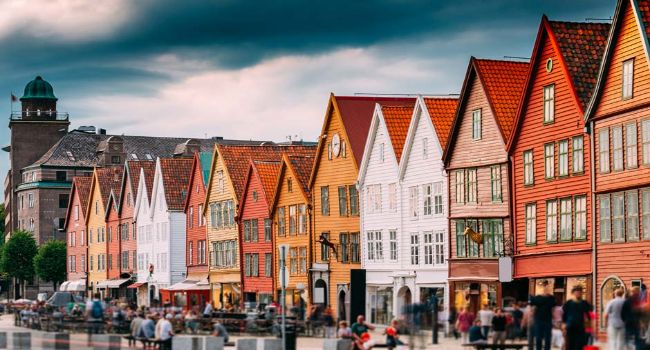
In spring, summer and autumn the city is well suited for walks or bicycles and the many public parks attract huge crowds whenever the sun comes out. The Oslofjord has great possibilities for swimming, sightseeing and island hopping, and the forests surrounding the city are popular hiking and biking destinations for locals.
Unlimited opportunities for fun
Juggle between nature adventures and serious shopping, various sports activities and urban café life – all in one day. Spring, summer and autumn in Norway is an action-packed feast, whilst winter is filled with activities fit for families and friends.




